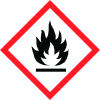ALR-008S-ET-10X
AccuStandard, Inc
Revision date : 2020-12-21


Note: Ingredients listed on restricted chemical lists
General Information
Revision date
2020-12-21
Product name
ALR-008S-ET-10X
Supplier name
AccuStandard, Inc
Emergency telephone
1-203-502-7070, +001-203-502-7070
Icons in SDS
Company Information
Company name
AccuStandard, Inc
E-mail address of the competent person responsible for the Safety Data Sheet
edocs@accustandard.com
GHS Information
Signal word
Danger
Hazard Codes
Hazard statements (CLP)
H225, H302, H312, H315, H320, H332, H335
Hazard statements
Code
Statements
H225
Highly Flammable liquid and vapour
H302
Harmful if swallowed
H312
Harmful in contact with skin
H315
Causes skin irritation
H320
Causes eye irritation
H332
Harmful if inhaled
H335
May cause respiratory irritation
Precautionary statements
Code
Statements
P202
Do not handle until all safety precautions have been read and understood.
P233
Keep container tightly closed.
P260
Do not breathe dust/fume/gas/mist/vapors/spray.
P262
Do not get in eyes, on skin, or on clothing.
P264
Wash ... thoroughly after handling.
P280
Wear protective gloves/protective clothing/eye protection/face protection.
P284
[In case of inadequate ventilation] Wear respiratory protection.
P338
Remove contact lenses, if present and easy to do. Continue rinsing.
P340
Remove victim to fresh air and keep at rest in a position comfortable for breathing.
P360
Rinse immediately contaminated clothing and skin with plenty of water before removing clothes.
P404
Store in a closed container.
Section 2
SECTION 2: Hazards identification
2.2 Label elements
3 * 2 HEALTH 2 0 3 FLAMMABILITY - continued P260 - Do not breathe vapor. P262 - Do not get in eyes, on skin or clothing. P264 - Wash thoroughly after handling. Do not take internally. Eye wash and safety equipment should be readily available. P280 - Protective gloves must be worn to prevent skin contact. P284 - Respiratory Protection: If workplace exposure limit(s) of product or any component is exceeded (see TLV/PEL), or a risk assessment shows air-purifying respirators are appropriate, use of a NIOSH/MSHA approved air supplied respirator is advised. Use a full-face respirator with multi-purpose combination (US) or type ABEK (EN14387) respirator cartridges in absence of proper environmental control. Always use respirators and components tested and approved under appropriate government standards such as NIOSH (US) or CEN (EU). Engineering and/or administrative controls should be implemented to reduce exposure. P338 - Eye contact: Immediately flush with plenty of water. After initial flushing, remove any contact lenses and continue flushing for at least 15 minutes. Assure adequate flushing by separating the eyelids with fingers. P340 - Inhalation: Remove to fresh air. If not breathing, give artificial respiration. If breathing is difficult, give oxygen. Get medical attention. P360 - Skin contact: Immediately wash skin with soap and plenty of water. Remove contaminated clothing. Get medical attention if symptoms occur. Wash clothing before reuse.
Signal word
Danger 0
Hazard statements
H225 - Highly Flammable (Flammable liquids, category 2) H302 - Harmful if swallowed. (Acute toxicity, oral, category 4) H312 - Harmful if absorbed through skin. (Acute toxicity, dermal, category 4) H315 - Irritating to skin. (Skin corrosion/irritation, category 2) H320 - Irritating to eyes. (Eye damage/irritation, category 2B) H332 - Harmful if inhaled. (Acute toxicity, inhalation, category 4) H335 - May be irritating to mucous membrane and upper respiratory system. (Specific target organ toxicity, single exposure; Respiratory tract irritation, category 3) Precautionary Codes: P202 - This product should only by used by persons trained in the safe handling of hazardous chemicals. P233 - Store in a tightly closed container. (P404) - continued
2.3 Other hazards
2.2.1 - Symptom of Exposure Health/Environment Highly Flammable (Flammable liquids, category 2) High concentrations or prolonged exposure causes headache, dizziness, nausea, irritation of eyes and respiratory tract, narcosis and eventually unconsciousness. High vapor concentrations may cause drowsiness. May cause eye damage. Causes depression of central nervous system.
Potential health effects
Irritating to eyes. (Eye damage/irritation, category 2B) Irritating to skin. (Skin corrosion/irritation, category 2) Harmful if absorbed through skin. (Acute toxicity, dermal, category 4) May be irritating to mucous membrane and upper respiratory system. (Specific target organ toxicity, single exposure; Respiratory tract irritation, category 3) Harmful if inhaled. (Acute toxicity, inhalation, category 4) Harmful if swallowed. (Acute toxicity, oral, category 4) 2.2.3 - Routes of Entry Inhalation, ingestion or skin contact. 2.2.4 - Carcinogenicity This product is or contains a component that is classified (ACGIH, IARC, NTP, OSHA) as probably not a cancer hazard.

